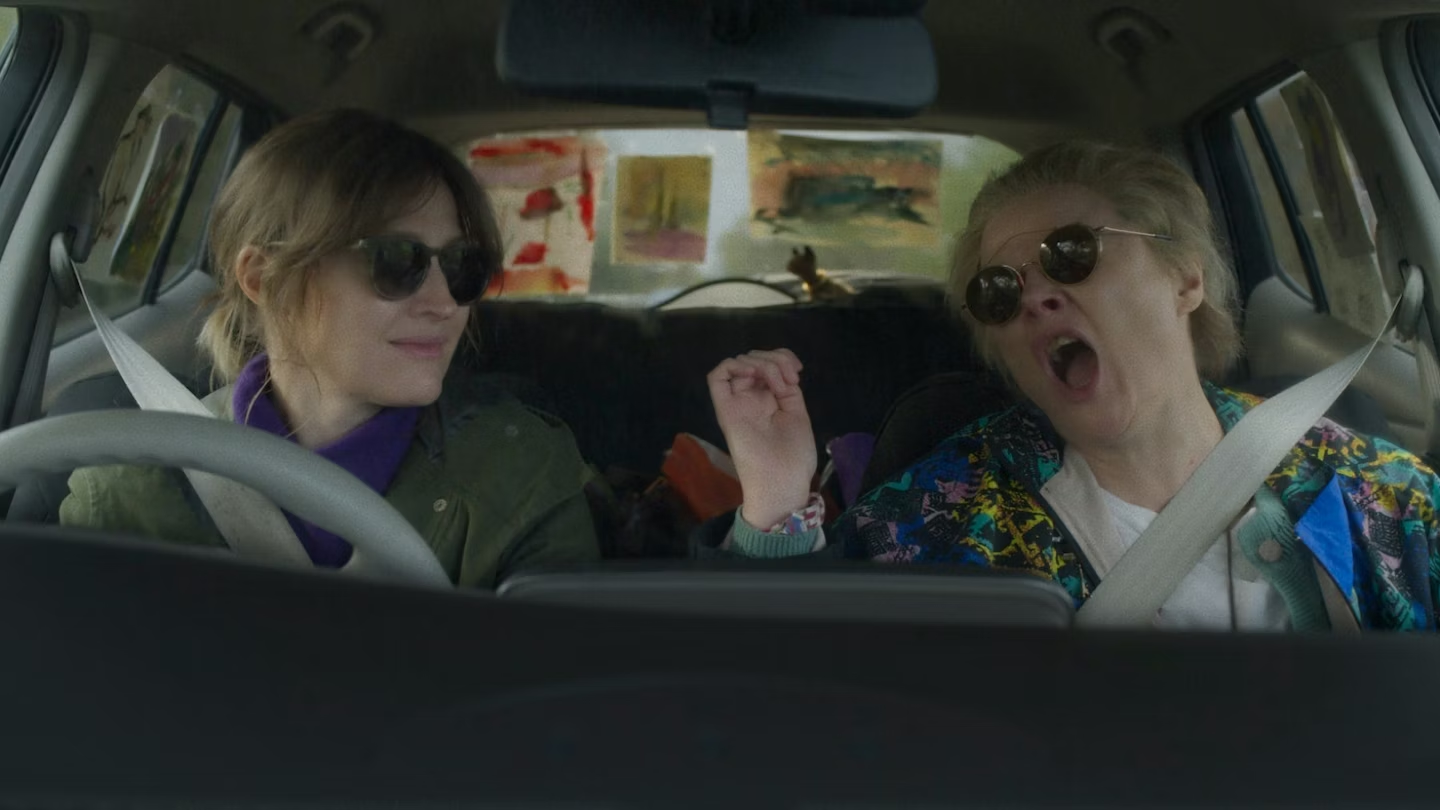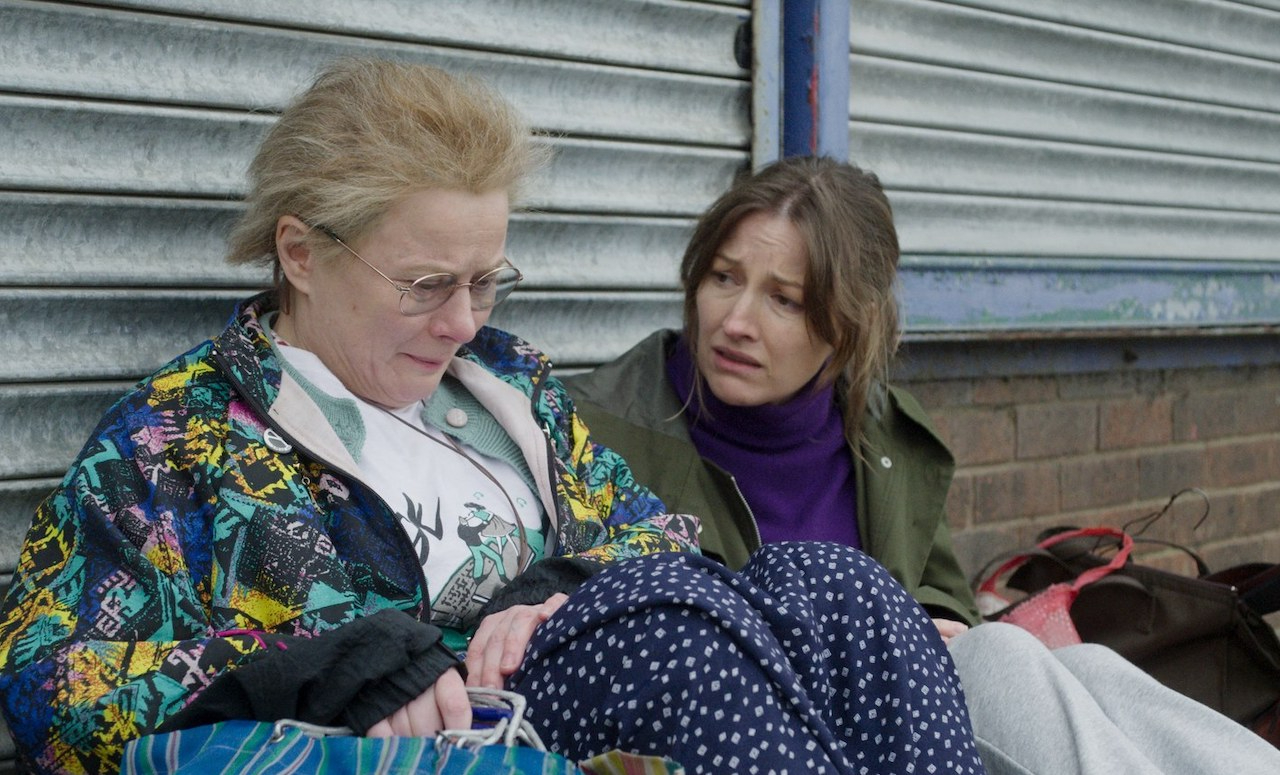The stories told by writer-director Carol Morley are poignant reclamation projects that demonstrate empathy for lost or troubled souls but don’t flinch from difficult truths.
In the documentary The Alcohol Years (2000), Morley’s subject is her vanished self, a promiscuous, hard-drinking Manchester teenager. The part-dramatised Dreams of a Life (2011) questions why over two years elapsed before the death of Joyce Carol Vincent, a well-liked 38-year-old, was revealed by the discovery of her remains in her bedsit in busy Wood Green. The Falling (2014), inspired by reported events, explores the reasons for a fainting contagion at a private girls’ school in the late 1960s.
“Don’t let people slip away” is one of Morley’s messages. It resounds through her latest film, Typist Artist Pirate King, an imagined late-life biopic of the social realist painter turned avant-garde collagist Audrey Amiss, who died in 2013.
Lighter than its predecessors, it takes the form of a raucous, incident-packed road trip. A high-functioning mental health patient, Audrey (Monica Dolan) lives alone – apart from a mouse and a beetle, both squatters – in her cluttered Clapham flat. When her flustered nurse Sandra (Kelly Macdonald) calls, Audrey cons her into driving her 280 miles so she can show her work in a backstreet exhibition in her Sunderland hometown.
Morley invented the trip and Sandra and gave her the surname Panza, so it’s hardly surprising that Audrey is tilting at a windmill, unaware she is heading north to resolve a childhood trauma. She has been estranged for six years from her married younger sister Dorothy (Gina McKee), who still lives in the North, so their meeting is inevitable. (Pictured below and bottom: Kelly Macdonald and Monica Dolan)
 Born in Sunderland 90 years ago tomorrow, Amiss showed artistic promise as a child. After attending the local art college, she won a scholarship to the Royal Academy Schools of Art in London, but abandoned her studies in 1956 after suffering a breakdown in her final term and being incarcerated in a Surrey psychiatric hospital.
Born in Sunderland 90 years ago tomorrow, Amiss showed artistic promise as a child. After attending the local art college, she won a scholarship to the Royal Academy Schools of Art in London, but abandoned her studies in 1956 after suffering a breakdown in her final term and being incarcerated in a Surrey psychiatric hospital.
Variously diagnosed with manic depression, paranoid schizophrenia, and bipolar disorder, Amiss was frequently hospitallsed thereafter, usually for creating civil disturbances, though for 30 years she worked as a shorthand typist for the Ministry of Labour, subsequently for Stockwell’s unemployment benefits office.
Illness prevented Amiss, who was articulate and highly literate, from enjoying a public career as an artist, but she remained prolific, creating thousands of sketches and other artworks, simultaneously logging her every transaction and her copious correspondence, and filling albums with photos from her travels to the Middle East, the Far East, Russia, Egypt, and South America. It’s conceivable that instability prompted in her an obsessive desire for order.
Amiss's realist paintings capture in brisk, bright strokes an England that no longer exists. Her scrapbooking of colorful food wrappers comprise a version of Pop Art more intimate and affecting than Andy Warhol’s. Delighted by everything she saw around her, Amiss could, with a few flicks of a felt-tip pen or brush, capture an object, person, or the weather in oblique visual equivalents of haikus.
Morley shows Audrey making impromptu art as Sandra, too nervous a driver to stick to a motorway, takes her cramped yellow Nissan Leaf and its passenger – intermittently gleeful, rude, obstreperous – onto pretty rural byways pastoralised by Agnès Godard’s lyrical cinematography. Carly Paradis’s tinkling xylophone score, which is augmented by such astutely chosen songs as Boy George’s “King of Everything” and Elbow’s “Dear Friends”, quells the turbulent waters beneath the film’s surface.
During Audrey and Sandra’s first stop, they stumble into a yoga session for senior ladies in a church hall, where Audrey believes the young instructor is her old headmistress. Dolan makes Audrey’s shifts between reason and delusion so seamless, her confusion of past and present so much part of her reality, her mood swings so sudden, that the viewer never knows, no more than does Sandra, what to expect next.
Audrey addresses a snide young male hitchhiker as a onetime art school rival and an avuncular police officer summoned to curb her belligerent behaviour at a hotel as her long-dead dad. That Morley has the officer cotton on and quietly comfort Sandra hints at the film’s advocacy of the kind of gentle psychotherapeutic approach to mental health care that was seldom available to women of Amiss’s vintage and working-class background.
 Macdonald’s sharp performance registers how wearying it can be providing companionship for someone whose consciousness is tuned to radio signals that are constantly being scrambled through no fault of their own. Audrey’s antics prove physically endangering when she makes the Nissan run off the road and when she risks a deadly plunge late on.
Macdonald’s sharp performance registers how wearying it can be providing companionship for someone whose consciousness is tuned to radio signals that are constantly being scrambled through no fault of their own. Audrey’s antics prove physically endangering when she makes the Nissan run off the road and when she risks a deadly plunge late on.
Morley is too discreet here to raise sex as an issue, except for when Audrey makes a lecher regret that he molested her in his Motorhome. More disturbing is the women’s visit to a derelict psychiatric hospital where Audrey was once incarcerated. The place looks like it was abandoned in a hurry, and as they survey the mess you can practically smell the ether, the rubber, the electricity.
Audrey proves more a source of wisdom for Sandra than a threat. As they bond, Sandra makes a confession relating to a recent tragedy that’s really a cry for help. Audrey is able to respond to it, reminding us how tenderly she restored the beetle to its feet after it had upended itself on her living room mantelpiece – a metaphor for universalising help that couldn’t be simpler or more potent.
McKee’s serene presence and soothing voice apply balm to the movie as Dorothy, whom the travellers find outside her home, guides them on a trip to Heber’s Ghyll, Ilkley, with its tumbling waters and mossy rocks. Something terrible happened to Audrey at this magical place during a school trip.
She is imperilled again, but the return of the repressed doesn’t return with enough vigor or clarity to make a convincing climax. It doesn’t harm Morley's lovely film, which might have ended with the reassuring conversation that takes place between Audrey and Sandra – were it more dramatic – on the sands of Roker Beach, ample evidence that the journey is the thing.















Add comment